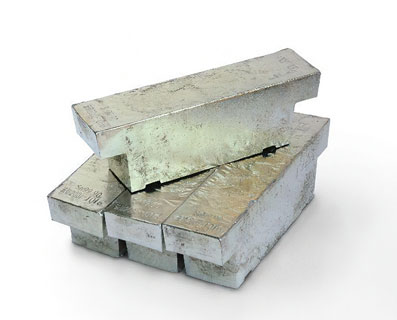Tin Ingot
(2023年09月01日)https://www.hsgmetal.com/products/tin-ingot/
Tin is a silver-white metal with a melting point of 231.9℃. Tin has excellent plasticity. The ductility of tin is second only to gold, silver, and copper, and can be calendered into tin foil up to 0.04mm. But tin has very low strength and hardness and cannot be used as a structural material.
Tin ingot, as a metallurgical charge, can be combined with other metals to make high-quality alloys. Bronze is a copper-tin alloy, which was widely used in life and production as early as BC. Fusible alloys generally contain tin.
Application of Tin Ingot
Tin ingots are commercial tin cast into ingots, partially refined, but also containing a small amount of different impurities (such as copper, lead, iron or arsenic), which is a solid tin different from tin plates. It can be used as a coating material and has a wide range of applications in food, machinery, electrical appliances, automotive, aerospace and other industrial sectors.
Production Process of Tin Ingot
Using high-quality tin concentrate as raw material, high-purity tin ingots are produced by pretreatment reduction smelting electric furnace smelting body electrolytic refining process. The raw materials are subjected to magnetic separation, rotary kiln roasting and other refining pretreatment, as well as quartz, limestone, coke, etc. The crude tin is refined into the furnace according to a certain proportion, and then "sulfuric acid-a kind of cresyl stannous sulfate" is used as the medium to electrolyze to produce high-purity tin ingots. The production process after the liquefaction furnace and the return to the furnace are concentrated in the smelting process of electric furnace crude tin and electric furnace slag.
If you are looking for a reliable tin ingot supplier, don't hesitate to contact us!
- このできごとのURL:



コメント